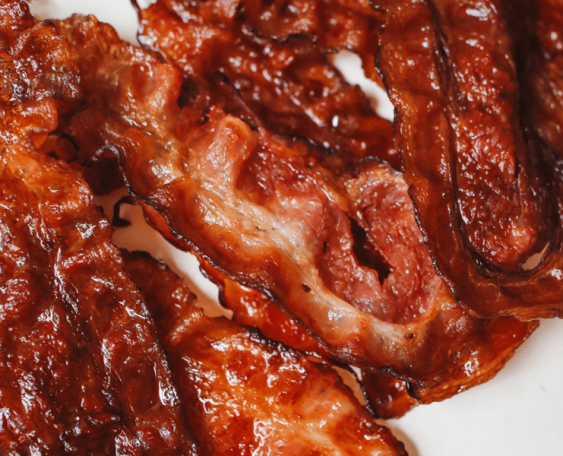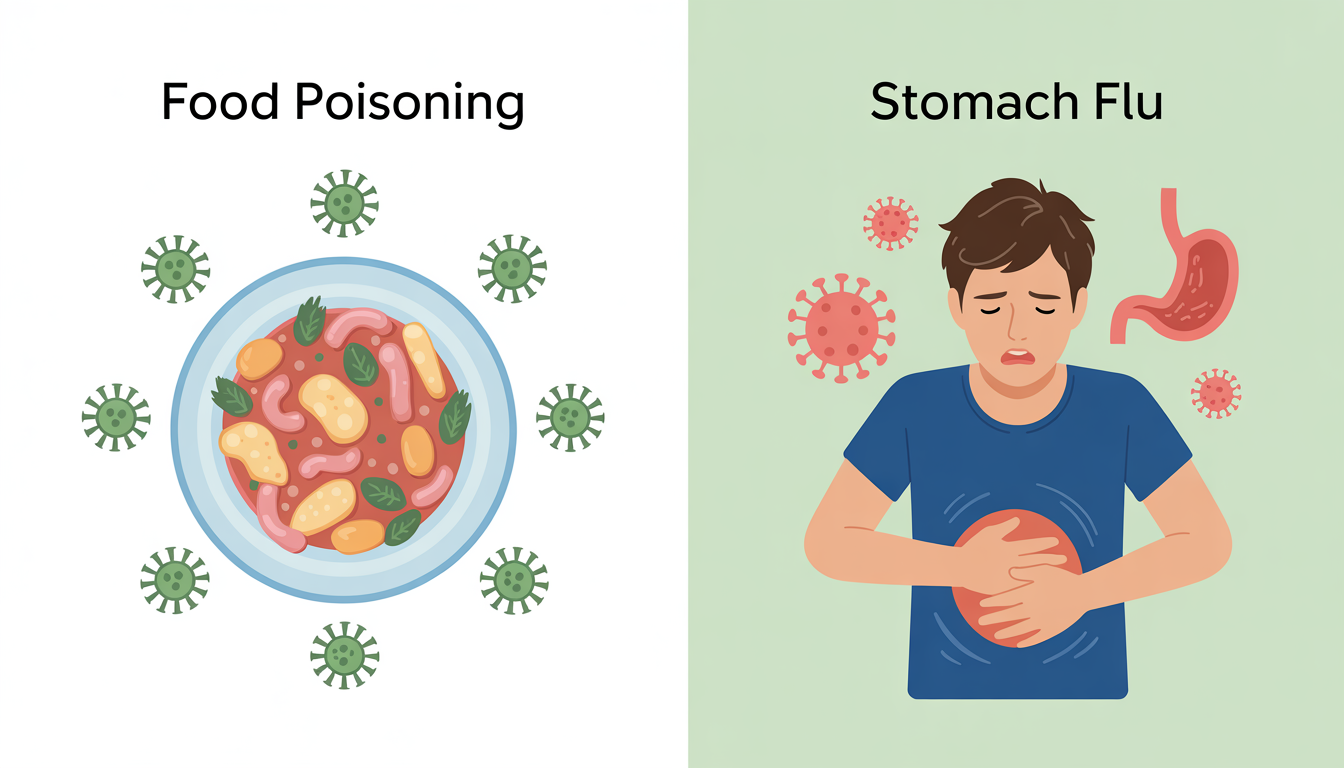How To Tell When Bacon Has Gone Bad
Expiration Date
The first thing to check is the date on the packaging. Many bacon manufacturers provide a “use-by” date, which recommends the latest date you should consume the product. According to the USDA, use-by dates indicate when food is at peak quality. This is determined by the:
- Characteristics of the food
- Type of packaging
- Length of time the food is held during distribution
- Temperature the food is kept at before sale
Bacon packaging may also have a “sell-by” date, which tells distributors how long to keep products for sale in their stores. After the sell-by date passes, product quality declines.
Though state laws may differ, federal law does not specifically require bacon producers to provide dates indicating product safety limits. Rather, best-by and sell-by dates are designed to help store management and consumers determine overall food quality. You can consider these dates when evaluating the freshness of your bacon and how long to keep it in your fridge.
Damaged Packaging
Next, take a close look at the bacon packaging itself. Well-packaged products stay fresh longer, whereas damaged packaging can lead to the bacon spoiling long before its sell-by or use-by date. Even if the bacon doesn’t look spoiled, broken seals or other damage could lead to visually imperceptible contamination from bacteria and other pathogens. When inspecting packaging, look for:
- Tears and punctures
- Failed vacuum seals
- Water damage
- Leaks
Foul Odors
After checking your bacon’s date and packaging, inspect the actual product. Start by smelling the bacon to see if there is a rancid, sour, sulfuric, or rotten stench.
Other than a mild smokiness, raw bacon should not have a strong smell. When bacteria, mold, yeast, or other harmful microbes start to grow on bacon, they emit a foul odor you can smell upon inspection. If you notice these smells, discard the bacon.
Feel and Texture
Another way to tell if bacon has gone bad is to simply feel it. Bacon that has an unusually slippery or slimy feel may be contaminated with bacteria. Certain types of bacteria grow and spread easily on the meat. These pathogens can break down the fat and protein in bacon, resulting in a layer of slime.
Coloring
Bacon’s color can also indicate its freshness. When inspecting bacon, you want to see red or pinkish meat with white, fatty marbling along the strips. Odd shades and discoloration may be a sign of spoilage. Do not consume bacon if it has:
- Become brown or gray
- Become green and slimy
- Dark patches or spots
- Darkening edges
Mold
Lastly, thoroughly check your bacon for signs of mold. Mold is a fungal growth that appears on the surface of foods and may penetrate invisibly into deeper layers. If you see white, green, or yellowish growth on any part of the bacon, it may have developed mold that can be harmful if ingested.
What Happens If You Eat Bad Bacon?
Eating bad bacon can result in food poisoning symptoms like from eating an type of contaminated pork, including:
How To Store Bacon
Storing bacon properly is essential to maintain its safety. Proper storage also ensures that bacon retains its taste, texture, and safety. Here’s how to store bacon, whether it’s unopened, opened, or cooked:
- Avoid Cross-Contamination – Store bacon away from other foods to prevent cross-contamination, especially if it’s raw.
- Label and Date – When freezing bacon, always label and date the packaging to keep track of how long it has been stored.
- Thawing – Thaw frozen bacon in the refrigerator or in cold water, not at room temperature, to minimize the risk of bacterial growth.
How Long Does Cooked Bacon Last in the Fridge?
The USDA provides guidelines on storing different types of bacon to help consumers keep it fresh. Store raw bacon in the refrigerator at 40 °F or below for up to seven days. Raw bacon will keep indefinitely in the freezer. However, keeping it longer than four months will affect quality.
If you purchased shelf-stable, cooked bacon, the USDA recommends storing it at 85 °F or below. Follow the use-by date on the package.
|
USDA Guidelines: Home Storage of Bacon |
|||
| Bacon Product | Pantry | Refrigerator – 40 °F or below | Freezer – 0 °F or below |
|---|---|---|---|
| Salt pork | N/A | 1 month | 4 to 6 months |
| Bacon | N/A | 7 days | 4 months |
| Beef bacon | N/A | 7 days | 4 months |
| Canadian bacon, sliced | N/A | 3 to 4 days | 4 to 8 weeks |
| Poultry bacon | N/A | 7 days | 4 months |
| Pancetta | N/A | 7 days | 4 months |
| Dry-cured sliced bacon | 10 days without refrigeration | 4 weeks in the refrigerator | 3 months |
| Dry-cured slab bacon | 3 weeks without refrigeration | 4 to 6 weeks in the refrigerator | 3 months |
| Bacon cured without nitrites | N/A | 3 weeks in the refrigerator | 6 months |
| Leftover cooked bacon, cooked by consumer | N/A | 4 to 5 days | 1 month |
| Baby food with fresh bacon | Observe “use-by” date. | 2 to 3 days after opening (leftovers not heated) | 1 month |
| Cooked bacon, purchased shelf stable | Unopened in the pantry (stored below 85 °F) until the “use-by” date on the package | After opening, refrigerate and use within 5 to 14 days. See the product package for specific recommendations. | 3 months |
| Cooked bacon, purchased refrigerated | Observe manufacturer’s “use-by” date. | Observe the manufacturer’s “use-by” date. | 3 months for best quality |
| Canned bacon in pantry | 2 to 5 years in pantry | 3 to 4 days after opening | 2 to 3 months after opening |
| Bacon bits, made with real bacon | Unopened in pantry, good until “sell-by” date | After opening, refrigerate up to 6 weeks. | 1 to 2 months |
| Imitation bacon bits (made with soy) | 4 months in pantry | Refer to jar for refrigerator storage. | Not necessary for safety. |
Source: “Bacon and Food Safety – Home Storage of Bacon Products.” U.S. Department of Agriculture, Food Safety and Inspection Service. Last Updated: Oct. 29, 2013 (Retrieved: March 7, 2024).
Legal Help for Foodborne Illnesses
If you contracted a foodborne illness due to spoiled bacon, you may be entitled to legal compensation. Keep Food Safe can help you figure out if you are eligible for a food poisoning lawsuit by connecting you with an experienced lawyer. Contact us today to learn more.




